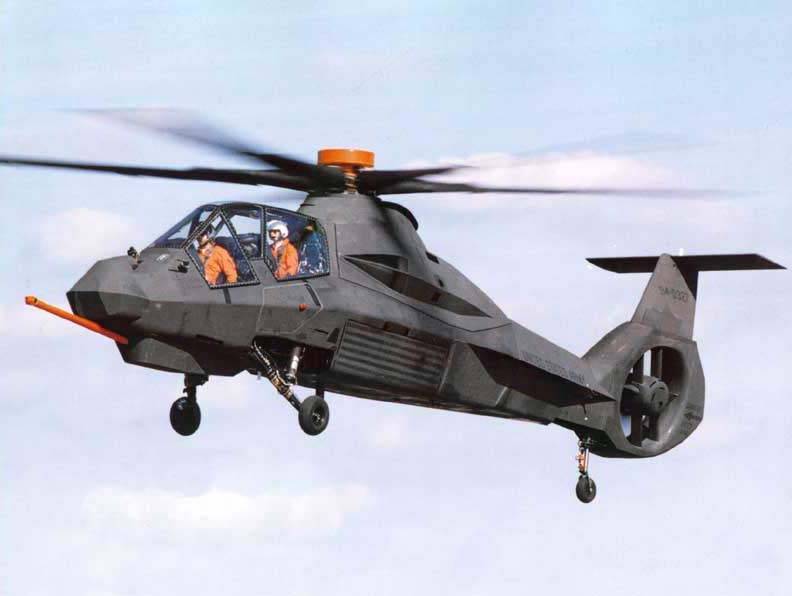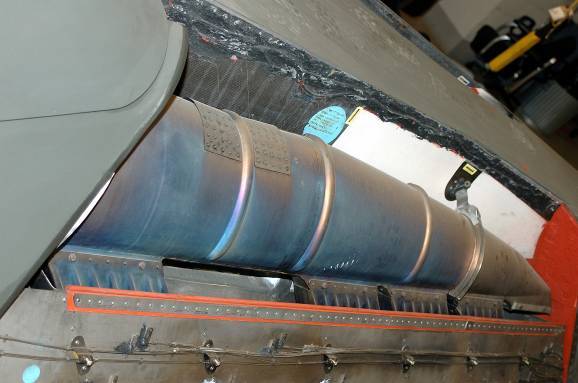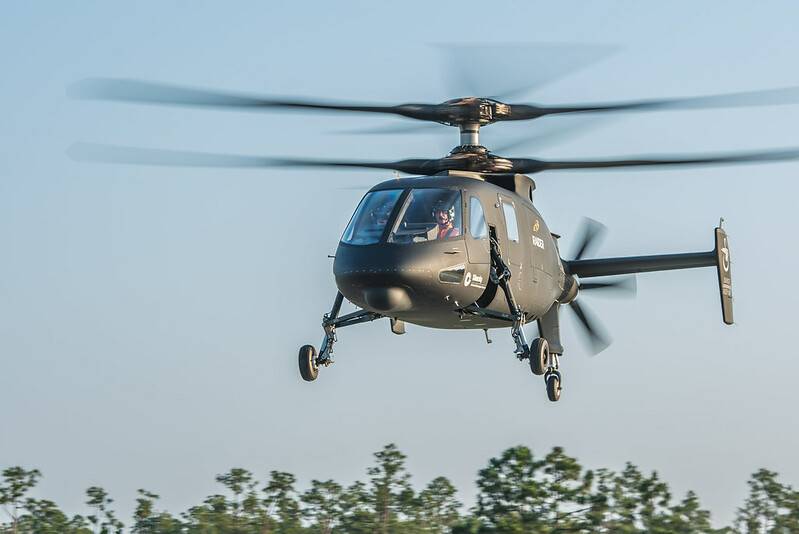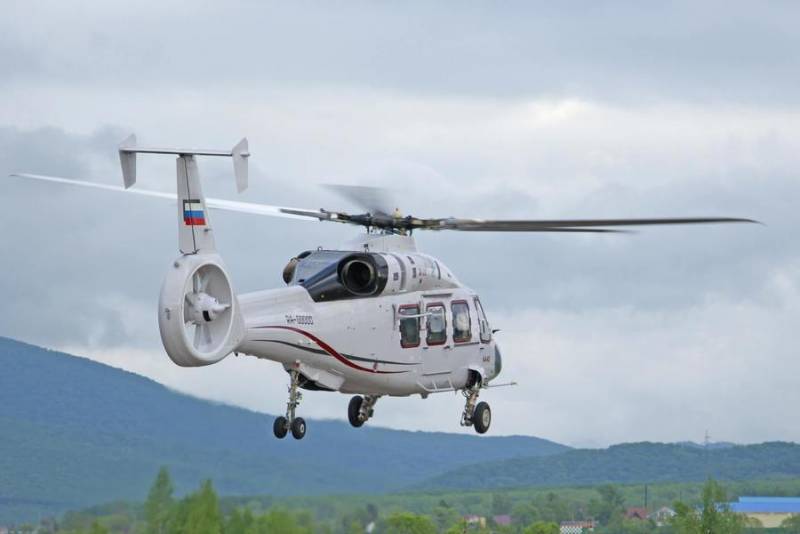Challenges and technologies. About stealth of helicopters

Helicopter RAH-66 Comanche - the most advanced stealth helicopter, which, however, did not make it to the series. US Army Photos
In connection with the rapid development of means of observation and detection, methods of reducing the visibility of an aircraft are of particular importance. T.N. stealth technologies are actively used in various fields, including helicopter construction. At the same time, the development of an unobtrusive helicopter has its own specifics and imposes special requirements on the selection and implementation of ideas.
Unmasking factors
A conventional helicopter is a fairly simple object to detect when using modern surveillance equipment. Rotary-wing aircraft of all known schemes and layouts have a number of technical features that should be considered as unmasking factors that simplify the work of enemy air defense.
First of all, the helicopter can be detected using radar. The main unmasking factor in this case is the support system and the tail rotor. These are rather complex mechanisms with many moving parts that effectively reflect the sounding radio signal and to a large extent help the radar to solve its problems.
The vast majority of modern military helicopters are equipped with turboshaft engines. Such a power plant shows high technical characteristics, but is the second unmasking factor. The turboshaft / gas turbine engine and gearbox become hot during operation. In addition, the engine emits hot gases. All this increases the thermal signature of the helicopter and makes it possible to detect it using infrared equipment.
The propulsion system and propellers together form another factor that unmasks the helicopter. During operation, they produce characteristic noise at different frequencies, which can spread over a long distance. Accordingly, the enemy can determine the presence of the helicopter literally with his ears.
In the context of detection, one should also remember about the operation of electronic systems - an on-board radar, communications, etc. Modern reconnaissance means are able to detect their signals and issue target designation to fire systems.

Russian Mi-24 with screen exhaust devices. Photo of the Ministry of Defense of the Russian Federation
Radar issues
In recent decades, in the helicopter industry, certain attention has been paid to the issues of reducing the radar signature of equipment. Similar tasks are solved with the help of already known technologies, tested on airplanes and other equipment. Moreover, the results of such projects do not always meet all expectations and desires.
The most striking example of a "stealth helicopter" is the American RAH-66 Comanche from Boeing and Sikorsky. A glider made of metal and composites of a characteristic faceted shape was developed for it. The carrier system was covered with a fairing, and the tail rotor was placed in a protected annular channel. Armaments were retracted into the fuselage and moved out only immediately before use.
Other projects to reduce the visibility of helicopters are also known. So, in the United States, a special modification of the multipurpose UH-60 was developed, which was distinguished by specific external contours and additional fairings made of special materials. Similar solutions have been applied in other countries as well.
It was reported that the effective scattering area of the RAH-66 helicopter was 360 times less than that of the serial AH-64, although the exact numbers were not disclosed. At the same time, apparently, all the measures taken did not allow to get rid of the main unmasking factor in the form of a carrier system. In addition, the helicopter proved to be unacceptably expensive to design and manufacture.
It is likely that these limited successes influenced the following projects. In modern and future projects, the use of characteristic contours or fairings is provided, but radar visibility is no longer put at the forefront.
Infrared stealth
The greatest successes to date have been obtained in the field of reducing the helicopter's signature in the infrared range. In our country and abroad, the necessary solutions have been found, which are developed in one way or another to obtain the desired results.
For example, domestic attack and transport-combat helicopters are equipped with the so-called. screen-exhaust devices (EVU). Such a product is installed on the engine exhaust pipe and receives hot gases. Cold air from the main rotor enters the EVU through separate windows - it mixes with the exhaust, and cooled gases come out, minimally unmasking the helicopter.

Exhaust system "Comancha". A pipe for a mixture of gases with air, nozzles and holes for discharge are visible. Photo Sikorskyarchives.com
A similar concept was implemented in the RAH-66 project. On this helicopter, the EVU was located in the tail boom; it was made in the form of two long pipes. The cooled gases were discharged into the atmosphere through many small holes.
The de-masking factor in the form of a heating propulsion system requires a separate solution. The motor and gearbox must be shielded and cooled with ambient air.
In general, very remarkable results have been obtained in the field of reducing infrared signatures, however, one hundred percent safety of the helicopter is still not guaranteed. Thermal imaging equipment and thermal homing heads continue to improve, and this progress partially neutralizes the success in the field of stealth technology.
Reducing noise
The first step to reduce the acoustic signature at one time was the emergence and introduction of turboshaft engines. They were quieter than piston engines of the same power, and further progress further reduced the contribution of the propulsion system to the overall noise of the helicopter. In addition, layout decisions had a positive effect on visibility. The motors are usually placed at the top of the airframe, while other structures serve as a shield, so that most of the noise goes to the upper hemisphere.

Experienced Sikorsky S-97 helicopter. The machine is equipped with an original carrier system that combines high performance with low noise. Photo Sikorsky / Lockheed Martin
A significant part of the overall noise is produced by the rotor. For this reason, new designs of blades and means of their suspension are being developed and introduced. The streamlining processes are optimized, the exit of the blade tip to transonic speeds is excluded, etc. All these methods can reduce the intensity of the noise or distribute the oscillations over a wider part of the spectrum.
The high-frequency component of the acoustic signature is mainly generated by the tail rotor. You can get rid of it by the most radical method, by using a different bearing system or replacing the propeller with another stabilization system. In addition, the installation of the screw in the annular channel shows good results. Such layout solutions are widely used in projects of stealth helicopters and "conventional" equipment.
Other solutions
The main unmasking factors are determined by the design of the helicopter. They can be reduced to a minimum or completely eliminated at the design stage. Other negative phenomena require attention already during operation. Competent organization of flights and / or combat use can further increase stealth, and with it, efficiency.

Ka-62 with a tail rotor in an annular channel. A multipurpose civilian helicopter does not require other stealth technologies. Photo "Russian Helicopters"
For additional protection from enemy surveillance equipment, it is necessary to use terrain folds, natural and artificial obstacles. Radars and communications should be used in optimal modes to meet the challenge and reduce the likelihood of detection. In this context, the idea of a "jumping helicopter", appearing over a shelter for a minimum time - only to select a target and launch a rocket proved to be good.
Tasks and their solutions
Thus, at the disposal of the developers and operators of helicopter technology is a large arsenal of various technical and practical solutions and methods that make it possible to reduce the vehicle's visibility, while increasing survivability and efficiency. The customer gets the opportunity to form the optimal appearance of the future helicopter, and the industry can solve this problem and give him the desired model of technology.
However, the proposed solutions to reduce visibility have different potential. Some ideas and designs have become widespread, while others have so far found only limited application in experimental and special projects. Whether this situation will change in the future is unknown. However, helicopter builders seem to be ready for any changes and new customer requirements. And, if the armies need a "full-fledged" stealth helicopter, the industry can make one.


Information